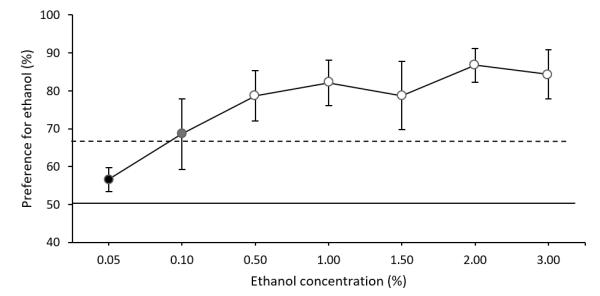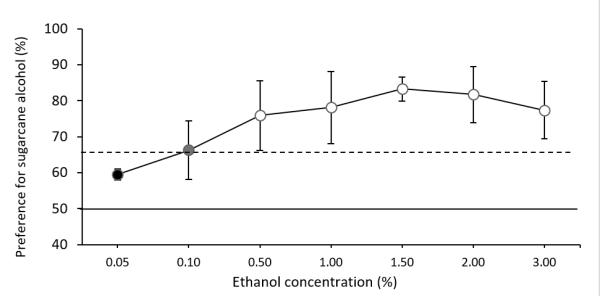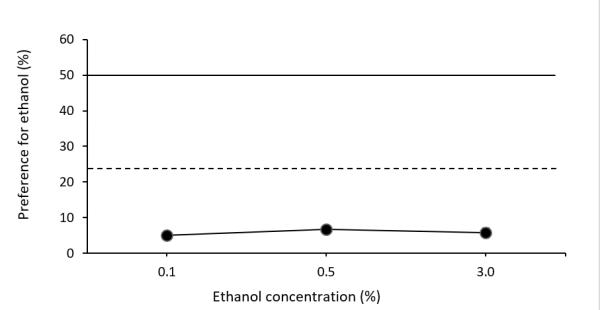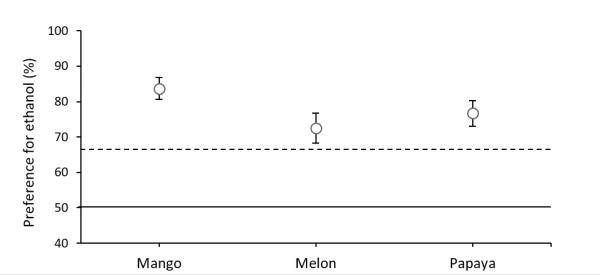Results
Experiment 1
Determination of absolute taste preference and taste preference threshold for ethanol
At concentrations between 0.5% and 3.0%, the animals clearly preferred the ethanol solutions over water and met both preference criteria. With the concentration of 0.1%, the animals still showed a preference for the ethanol but only met one of the two preference criteria, and with 0.05% ethanol they failed with both preference criteria (Figure 1).

Experiment 2
Determination of absolute taste preference and taste preference threshold for sugarcane alcohol
At concentrations between 0.5% and 3.0%, the animals clearly preferred the ethanol solutions over water and met both preference criteria. With the concentration of 0.1%, the animals still showed a preference for the ethanol but only met one of the two preference criteria, and with 0.05% ethanol they failed with both preference criteria (Figure 2).

Experiment 3
Determination of relative taste preference for ethanol
In the first two test-series, in which the ethanol-spiked and the alternative stimuli both had the same sucrose concentration, the eight spider monkeys preferred the ethanol spiked alternative with all tested concentrations (Figure 3.A & 3.B).

In the third test series, in which the ethanol spiked stimulus contained 30mM sucrose and the alternative stimulus contained 60mM sucrose, the eight spider monkeys clearly rejected the ethanol-sîked solutions with all tested conentrations (Figure 4)

Experiment 4
Assessment of taste preference for ethanol in fruit matrices
With all three fruit types tested (mango, melon, and papaya), the animals as a group significantly preferred the pureed fruits spiked with 3% ethanol over the non-spiked alternative and met both preference criteria (Figure 5).

Responsible for this page:
Director of undergraduate studies Biology
Last updated:
05/07/19
